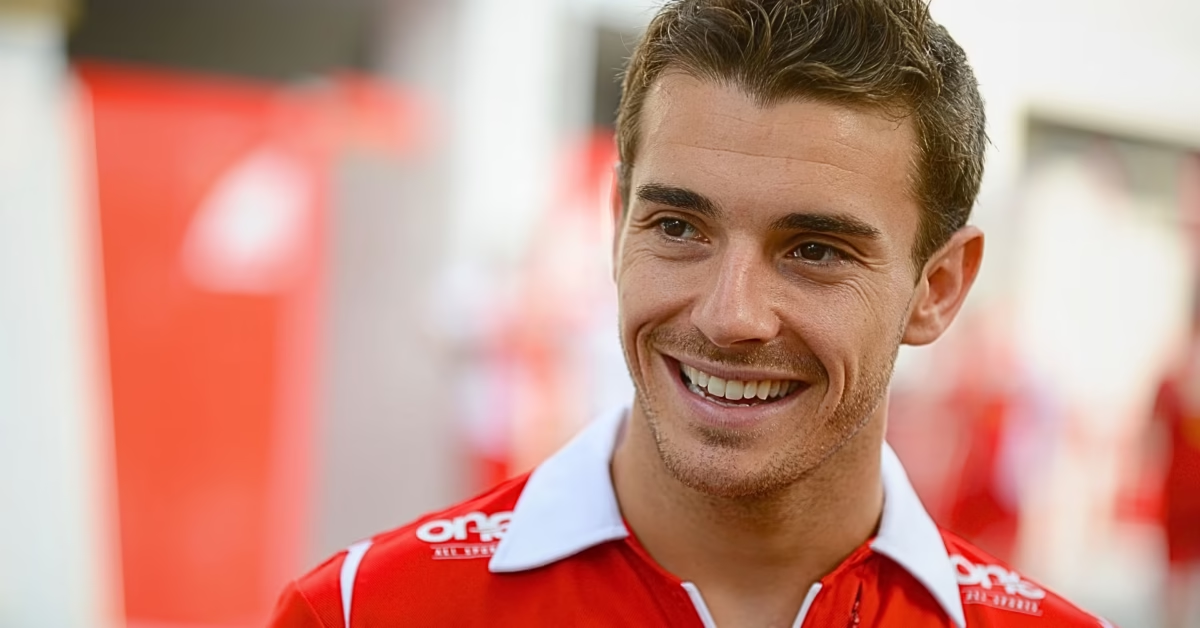Jules Bianchi was a hot prospect in F1 and signed for the Ferrari Driver Academy in 2009. In the 2011 season, he became Ferrari’s test driver, before gaining a seat at Marussia in 2013. His new team were backmarkers, but the Frenchman scored them their only ever points at the 2014 Monaco GP, when he finished in P9.
However, the 2014 Japanese GP was the cause of Bianchi tragically passing away after injuries sustained in a wet race. Bianchi collided with a recovery vehicle under double-waved yellows after losing control on a soaking track. His fatal crash became the catalyst for F1 to introduce life-saving regulations.
The halo is made mandatory for all F1 cars following Jules Bianchi’s accident
After the fatal accident of Jules Bianchi, the FIA made it mandatory for all open-wheeled single-seaters to have the halo device installed on the cars from the 2018 season. Bianchi’s car had slid into a wheel loader after losing control near the Dunlop Curve. Bianchi was unconscious after the impact and was placed into a coma, where he would pass away the following July.
The halo was already in development, but following the incident in Suzuka, its implementation was accelerated for the cars. The halo is a curved bar above the driver’s head and has been credited with saving drivers from serious injury or even death.
In the 2021 Italian GP, Max Verstappen and Lewis Hamilton collided. Verstappen’s car landed on top of Hamilton’s, but the halo took the brunt of the impact, saving Hamilton from serious injury. The halo also saved Romain Grosjean at the 2020 Bahrain GP. When his Haas split in two, the device deflected the barrier, which would have his his head.
F1 introduces the Virtual Safety Car
After Bianchi’s fatal crash in 2014, the Virtual Safety Car (VSC) was introduced the following season. After an investigation, it was ruled that Bianchi had carried too much speed into the double-waved yellow zone on the wet track and lost control. The VSC was rolled out to be more impactful than yellow flags.
The VSC neutralises the race and has a strict speed delta that all drivers must follow. Exceeding the speed limit will result in a penalty. This has stopped drivers from gaining an advantage by speeding under yellow flags. The VSC was first used in the 2015 Monaco GP following an accident by Max Verstappen.
An incredibly emotional and open interview from Pierre Gasly regarding the incident with the recovery tractor coming onto the track during the Japanese Grand Prix. pic.twitter.com/ttcP5zNdmc
— Sky Sports F1 (@SkySportsF1) October 9, 2022
Other safety measures were implemented across circuits on the calendar. Suzuka’s drainage, as well as other circuits, was improved to reduce standing water. The FIA also introduced guidelines stating that the start of a Grand Prix should not be less than four hours before dusk.
Despite all the safety improvements, F1 still has issues. In the 2022 Japanese GP, a similar accident nearly occurred when Pierre Gasly narrowly avoided hitting a recovery vehicle in awful conditions. The sport is improving in driver safety, but it still has a way to go.












